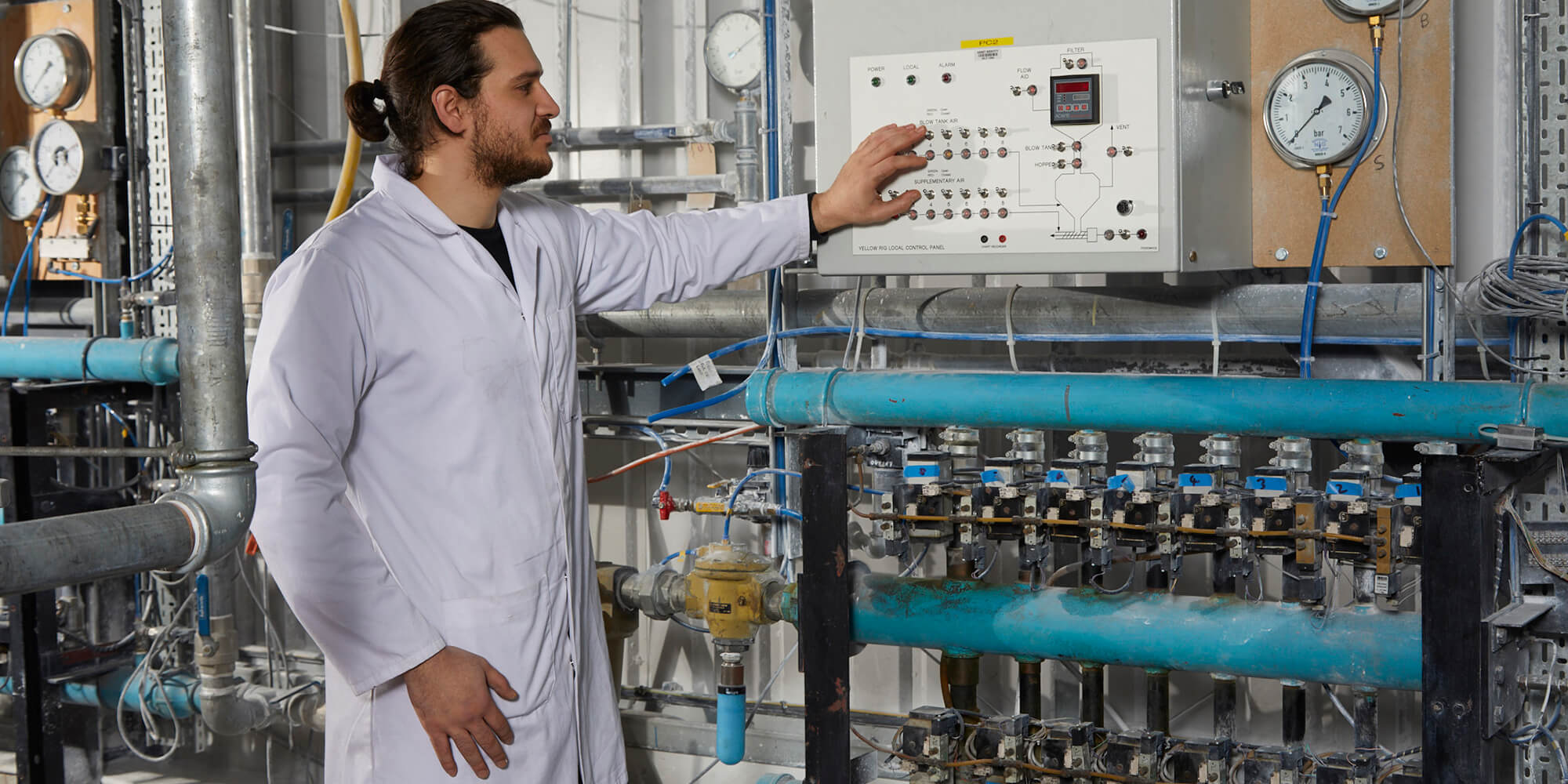Applications of nonlinear dynamics and chaotic behaviour in modelling 2-phase gas-solid flow.
"Nonlinear dynamical systems" is a defined term indicating a special class of engineering, environmental and mathematical systems that behave in a way that is not fully stable, but neither is it completely unstable. Weather systems are one of the best known examples, that have been studied extensively in connection with this mathematical paradigm; It is not possible to predict with any accuracy locally what the weather will be on any particular day, yet the overall climate (e.g. average daytime temperature in May) is quite predictable over the longer term. The reason for this behaviour is the coupling of non-linear response with "sensitive dependence on initial conditions" (aka "the butterfly effect") which means that very tiny differences in the starting points of the elements (e.g. distribution of temperature) very quickly lead to utterly divergent behaviour. Such systems frequently exhibit cyclical "strange attractor" behaviour; they cycle around loops of behaviour that are never the same twice, and cannot be predicted, yet always within a stochastic distribution of values. It also yields fractal behaviour.
Such behaviour is actually very common in the natural world and recent research work at The Wolfson Centre using both high speed photography and electrostatic tomography of particle behaviour has suggested very strongly that two-phase gas-solids flow is rich in this behaviour, something that has long been suspected. The flows and particle movements (micro-scale) are highly unstable locally, yet the overall behaviour of the pipeline with material flowing (macro-scale) is very steady.
Understanding this is extremely important because it puts very specific constraints on two important things:
- How such systems can be modelled better for analysis and design purposes. This is critically important for industrial design of the systems
- How such systems may be controlled and optimised, especially when trying to push power consumption down to a minimum, which makes blockage more likely as the instabilities magnify near the operating point for minimum energy.
